Field Study Drawings
- Help students connect art to everyday life
- Be able to make comprehensive observations of an object and assist students in doing so.
- Become comfortable with art vocabulary and use it in instruction.
- Improve observational skills.
- Connect concepts and experiences across multiple subjects.
- Connect visual arts to everyday life.
- Effective use of line in visual media
- Value: lightness or darkness.
- Line: one of the elements of art, maybe the most basic. It’s a continuous mark. Some things that can vary with lines are: value, color, width, length, and the shapes it makes.
- Form: another element of art, anything that has volume, be it geomentric or organic (like our field study objects).
- pencil
- paper
- pencil sharpener
- object to study and draw
- *optional: very fine tip marker
Step by Step Instructions

1 Getting Started
Students should place the object in a way that they can see the most important visual information. The sketch should start with the big parts first, in this case the stem. Otherwise it’s easy for them to get caught up in the details and lose the big picture, leading to proportions being off. From there, they can start building their structure by adding onto that big part. They still are not worrying about the details.
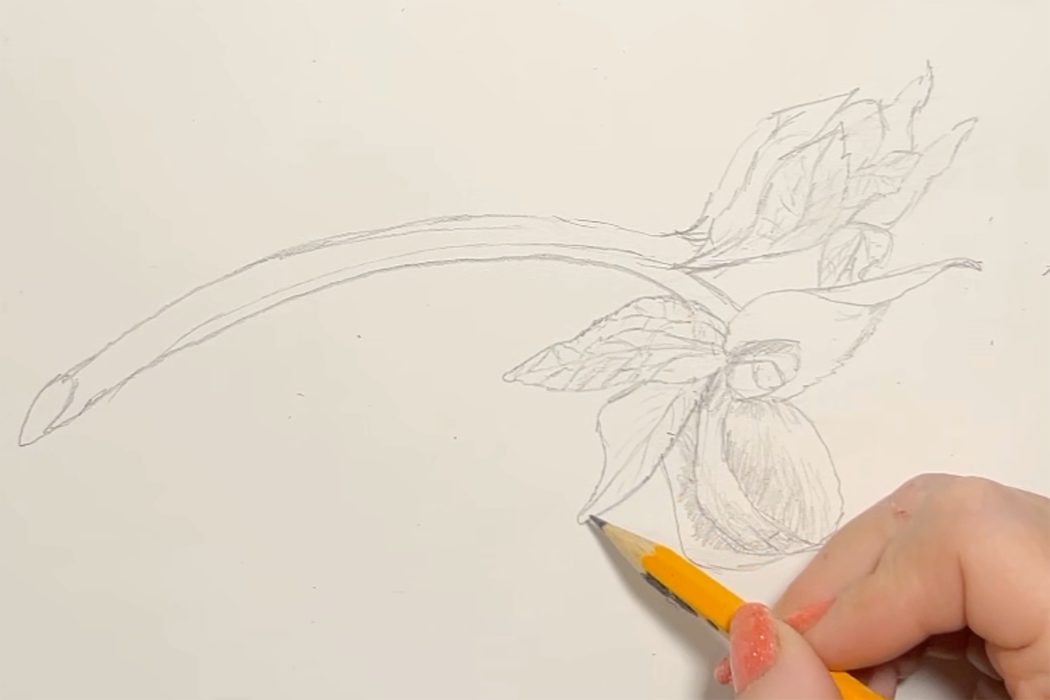
2 Adding in Details
Once they have the main structures down, they can start adding in the details. The most important ones to add are the things that say “this is xx”: identifiers. For this sketch, it would be adding in the serrated edges on the leaves, the veining, and even some loose shading to show the color variegation on the flower petals. Remember, this is about looking, it’s not a still life, so it might help for them to pick up their object and get a closer look.
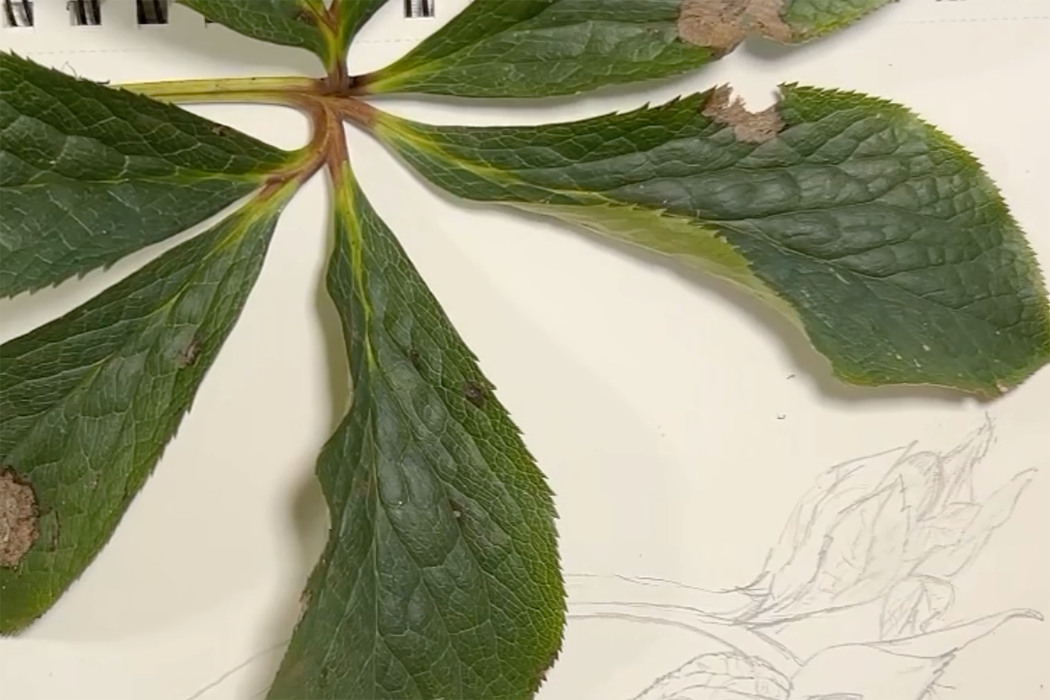
3 Other Important Identifiers
When drawing a field study of plants, especially those with flowers, it’s important to add in a other parts of the plant, like leaves. Another example would be that if they are studying a tree they could draw the main tree form, and then close-ups of the leaves and bark.

4 Get the Big Forms
Just like in step 1, get the big parts in first. For this sketch, it was important to show where all of the bracts connect.
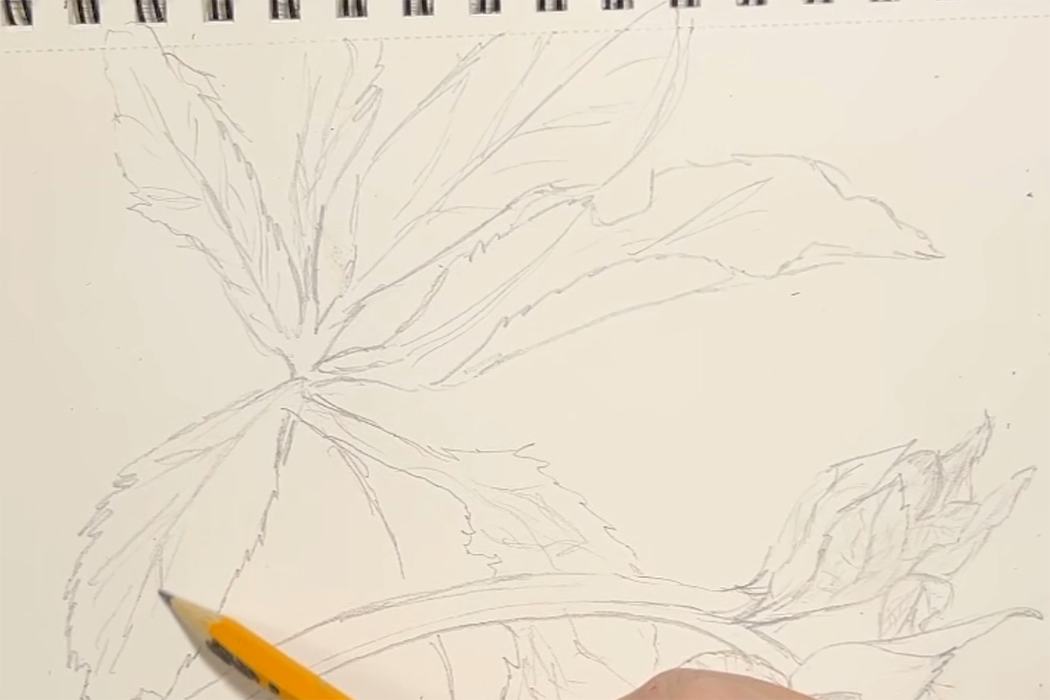
5 Fill in Those Details
After getting in the big forms, they can add in the details. Have them focus on the aspects that would help identify the object if it was found out in the wild. What would tell them that it’s this object? It’s fine to layer objects on top of each other. Again, the goal is to relay information, not just to make a pretty composition.
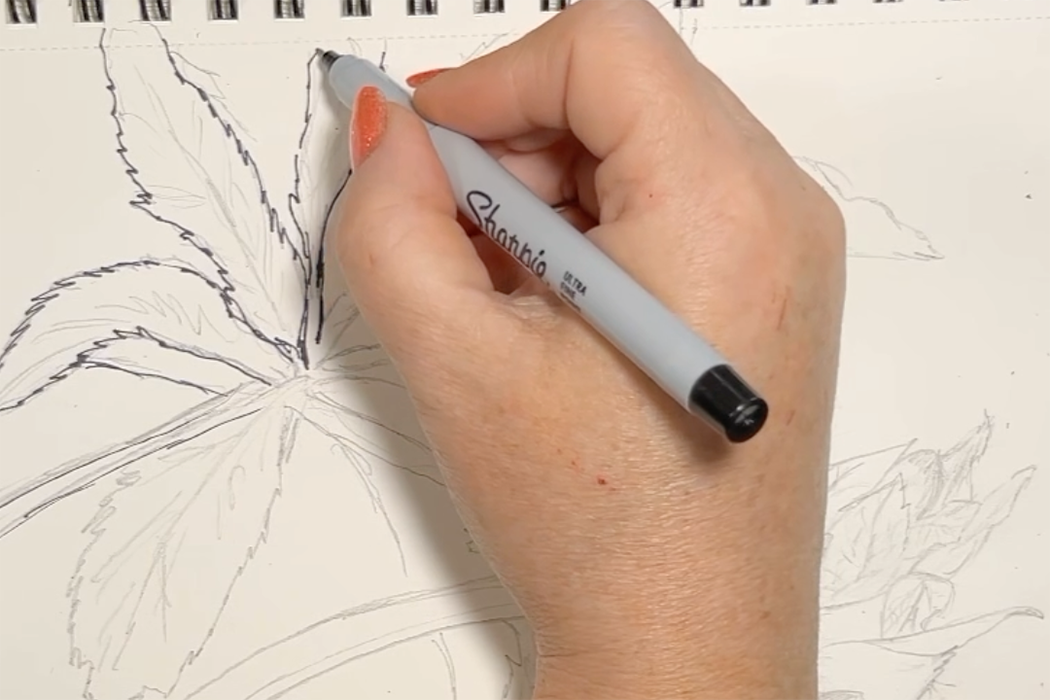
6 Emphasize the Important Lines
For this sketch, I decided to trace over the main lines, the forms in particular, with a very fine tip marker. Not only does it look nice, but it also brings those key lines back to being the first thing you notice when you look at it. It’s a way to use value and line to emphasize specific aspects of the field study. This step is totally optional, if you don’t have markers then don’t worry about it! It’s still a nice, usable, field study sketch.
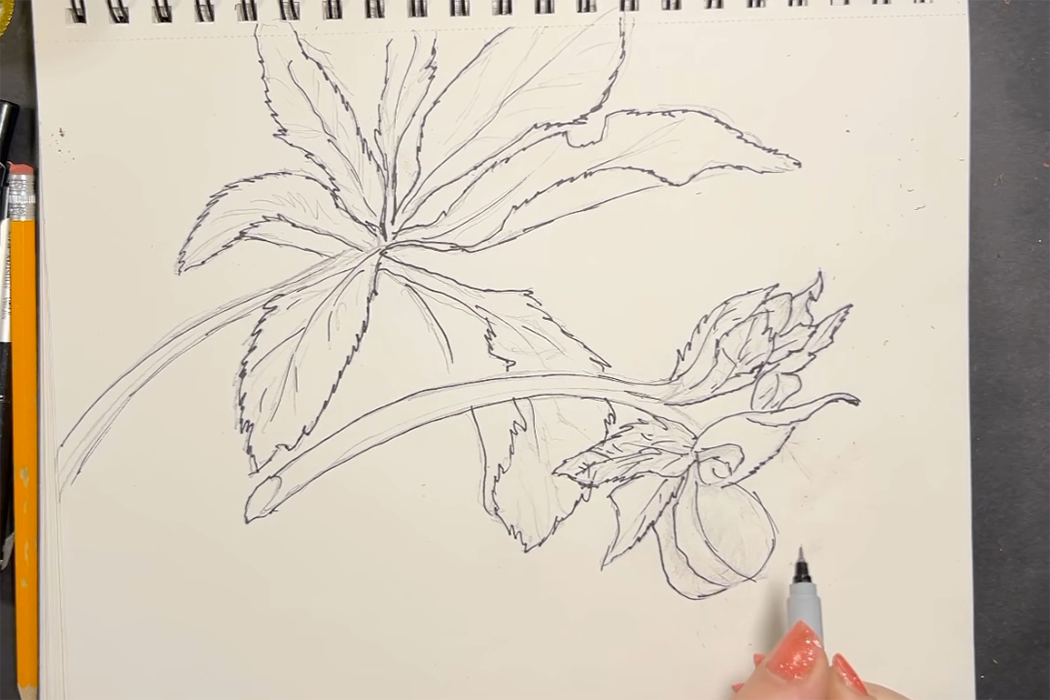
7 Wrap it Up
It’s done!
Field studies are a fantastic addition to a science curriculum, such as landscapes, mountains, rocks, etc. Photographs can stand in for physical objects, but it’s not the preferred method. Students can’t lift up a photo to see something from a different angle like they can with a real object.
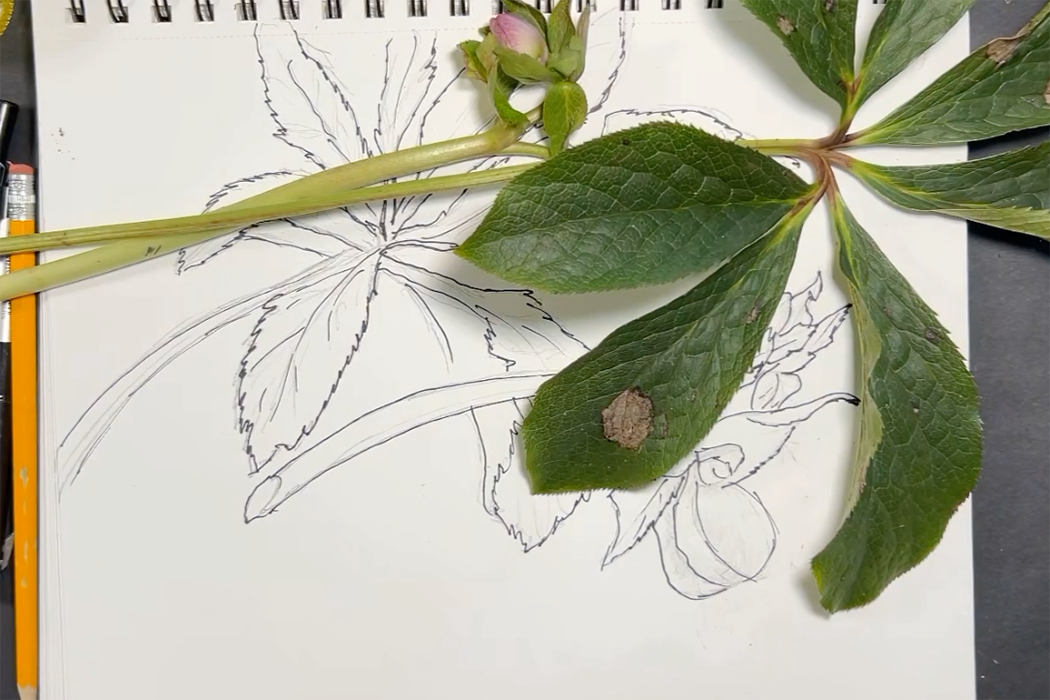
8 Debrief
If this was the first field study your class has made, a brief conversation afterward could help students connect the activity to the goals.
Some topics that can be discussed are what parts they thought were the most important to sketch and why. What characteristics do they think identifies their object?